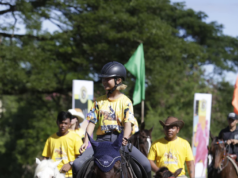CLARK FREEPORT – Agriculture Sec. Proceso Alacala bared here yesterday plans to make the country one of the world’s top sources of tilapia, now also referred to worldwide as “aquatic chicken” for its popularity, by developing at least 749,917 hectares for their production in one region alone.
In his speech at the 4th Tilapia Congress here yesterday, Alcala said “the Philippines has maintained its position among the top tilapia- producing countries, cornering eight percent of the total world production with an output of 260,935 tons.”
“Central Luzon had the lion’s share with 44.94 percent of the total production,” said Alcala in a speech read for him by Department of Agriculture (DA) Director for Central Luzon Andrew Villacorta. Bureau of Fisheries and Aquatic Resources (BFAR) Regional Director Remedios Ontangco noted in her speech that the congress was meant “to provide an avenue for the meeting of all stakeholders of the tilapia industry and to plan on how to sustain the production and elevate the country as one of the major suppliers of tilapia in the world.”
Alcala said that to boost tilapia production with an eye for international market, the government is investing more on research and development and expansion of new areas, particularly in the Bicol region, for tilapia production.
“Bicol region’s inland water resources capable of tilapia production are at 246,063 hectares of swamplands, 253,854 hectares of brackish water fishponds, 200,000 hectares of lakes, 31,000 hectares of rivers, and 19,000 hectares of reservoirs,” he said.
For his part, BFAR Director Asis Perez noted that while the Philippines is only the world’s fourth biggest producer of tilapia, its environmental conditions would boost production to surpass the other three top producers China, Egypt and Indonesia.
Perez noted studies of experts indicating that the Philippines, Indonesia and Papua New Guinea provide the best environmental conditions for tilapia culture worldwide. But Alcala noted that despite being a leading tilapia producer, local production is insufficient even for local demand.
“This opens up opportunities and challenges that we can discuss in this conference,” he said, as he cited “export opportunities” as among the objectives of the congress.
Ontangco said BFAR has already prepared a “draft tilapia roadmap” to boost tilapia production, done in consultation with the academe, research institutions, fishpond operators organizations, officers of fisheries society and major suppliers of aquatic products, feeds and fingerlings.
Ontangco said that tilapia’s worldwide popularity is growing, so that from being referred to as “aquatic chicken,” it could even overtake chicken itself in popularity to the point of chicken being referred to someday as “terrestrial tilapia.”




